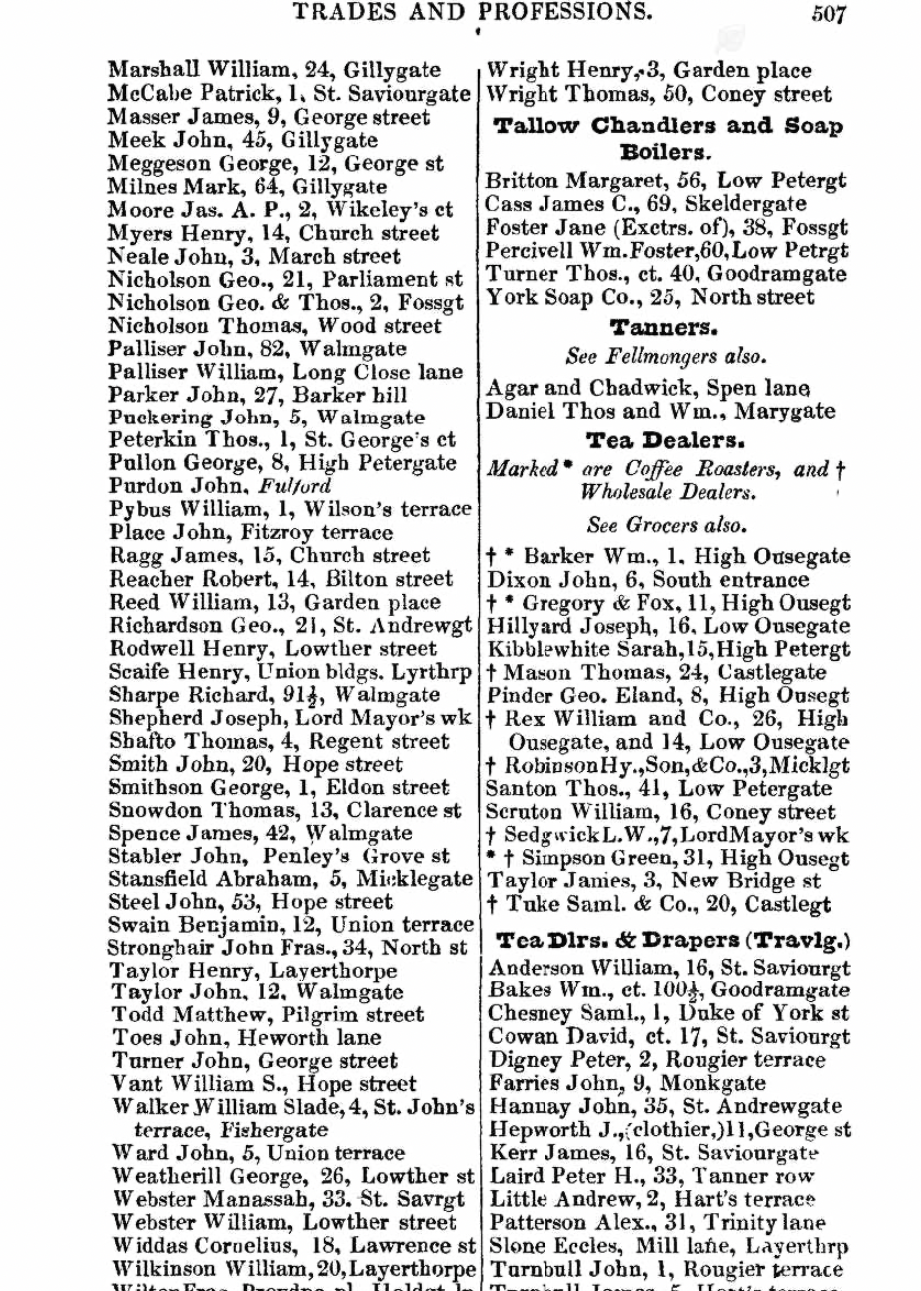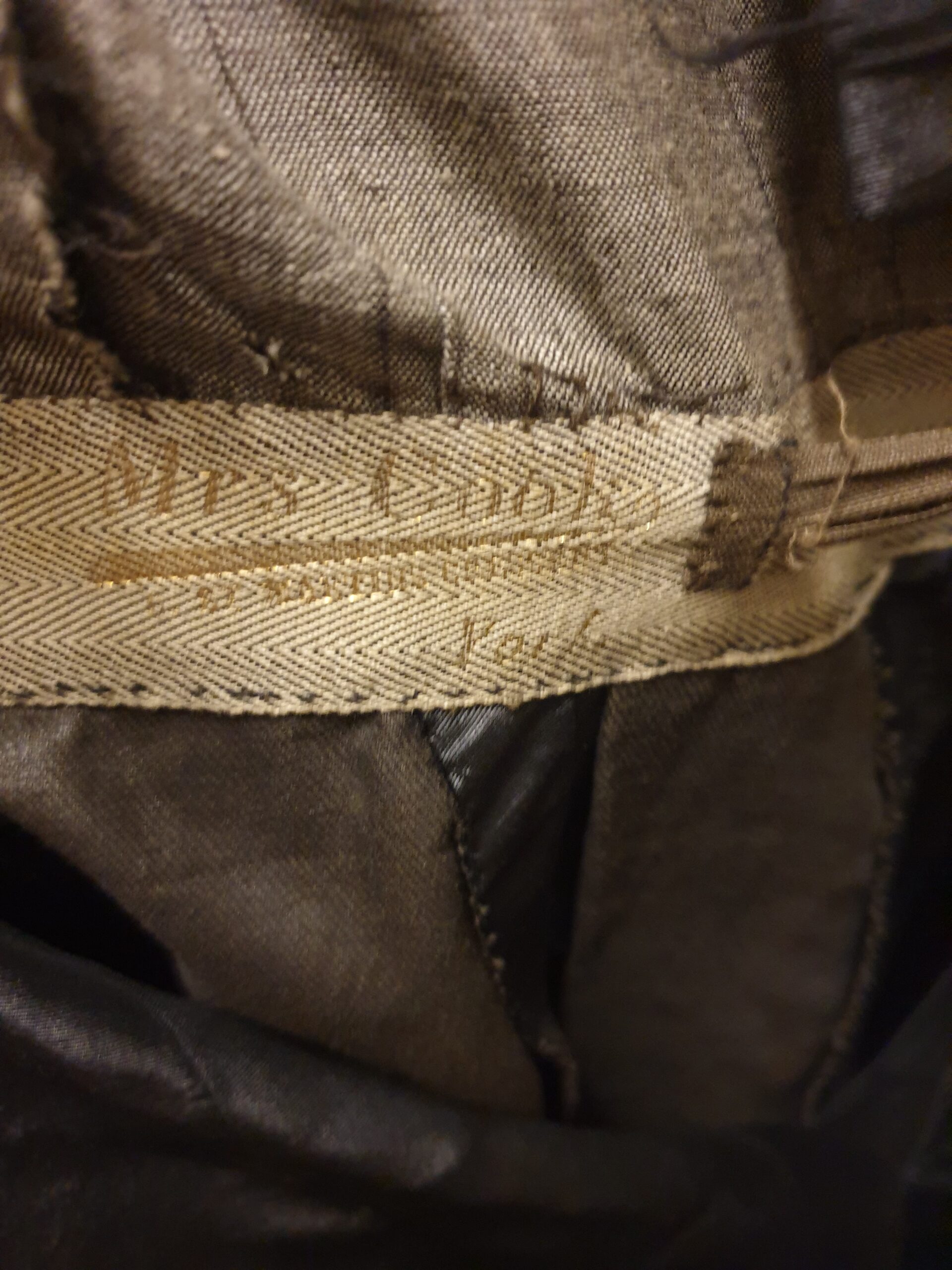From a black dress to a Portaloo By Jane Morrow, Volunteer at York Castle Museum
When I retired and was looking at ways to keep busy I became a volunteer for York Castle Museum. At school history had never engaged me but I had an interest in the history of York, and had been researching my family history for some time. Initially I chose public facing roles but was interested in behind the scenes work as well.
I became involved in a project using census returns and other records to produce personal and business histories of the shopkeepers whose businesses were represented on Kirkgate at the Museum. This led to connections with the volunteers at York Cemetery who have an amazing database of the burial registers there.
Then in 2022 a back room opportunity was advertised, working in a small team to research and record a collection of random items that had accumulated in a corner of the Museum Store. I learned more about research sources, object handling and conservation, and fell out with the museum computer system every week.
I enjoyed these projects very much. The curators made use of my experience researching my own family history, and gave me plenty of new areas to read up and learn about, as well as meeting other volunteers and museum staff.
Fast forward to summer of 2024, and I was told of a new project putting together information to support the planned York Makers display in the Fashion Gallery. A very diverse team was assembled and we chose chronological periods to work on. I chose 1850-1913.

So, starting points in the 1850-1913 period were some of the Museum objects that had been identified as potentially for display, and trade directories/contemporary newspapers. A trawl of the trade directories for this period gave us a wide range of garment industry trades within central York including dressmakers, tailors and stay makers, drapers and haberdashers, boot and shoe makers, curriers and leather sellers and corset makers and milliners. One strategy we adopted early on was to pick people with standout names to research – hence Manasseh Webster, Lavinia Deveraux and Cornelius Widdas. They’re very much easier to pick out of parish registers or census returns than Messrs Smith, Brown and Jones!


Another strand of research was based on a black watered silk ladies dress in the museum collection, with a printed label in the waistband – ‘Mrs Cook, 6 St Martin’s Crescent, York’. Initially I couldn’t even find that address on modern or early maps, and we didn’t know Mrs Cook’s forename. Then I came across recently digitised trade directories which yielded a first initial M and then the trail came to life. I was able to build the story of Maria Cook, née Shepherd, the widow of a joiner named John Cook. She was born into the family of William Shepherd, a plane maker (someone who makes equipment to smooth wood). At 19 she was a house servant to the family of the Steward of Harewood House (north of 0Leeds). After her short and childless marriage, she lodged with a bricklayer in the Bishophill area and made her living as a dressmaker. Later she resided at Dorothy Wilson house, an almshouse for poor women. On her death in 1905 a grave was purchased at York Cemetery by her brother Frederick Shepherd and she is buried there with her youngest sister.

Maria Cook, c.1870s, photographer unknown . Courtesy of Friends of York Cemetery and the collection of Hugh Murray
And why Portaloo?
Frederick Shepherd, Maria’s brother, and his son Frederick Welton Shepherd, founded the York building firm later known as Shepherd Construction. In the 1960s my family came to York where Dad took up a post in their Portasilo division. That division led to the development of Portakabin and Portaloo – now used as generic names but invented in York.
If it wasn’t for Frederick Shepherd I probably wouldn’t have grown up in York!

